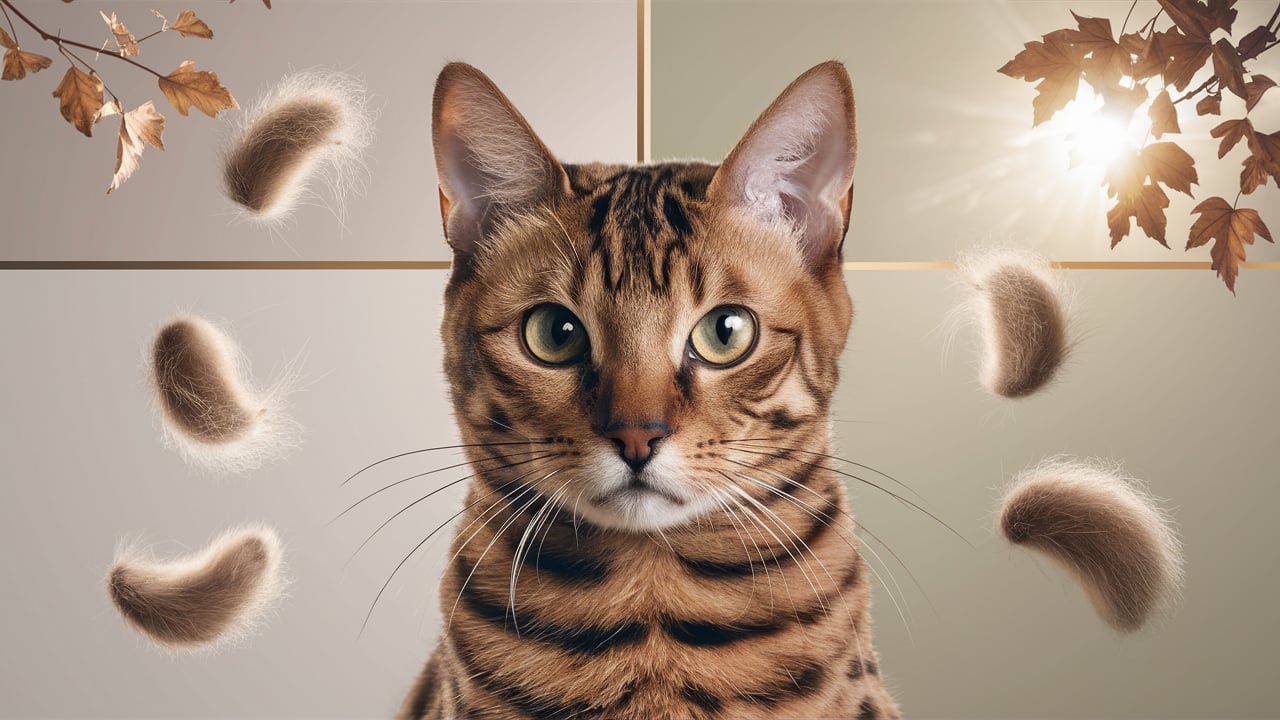Introduction
Bengal cats are captivating creatures, admired for their exotic appearance and lively personality. However, as beautiful as they are, one common question arises among potential cat owners: Do Bengal cats shed? or Why Do Cats Shed? Shedding can be a significant consideration for those concerned about allergies or simply wanting to maintain a clean home. In this article, we’ll explore everything you need to know about Bengal cats and their shedding habits.
What Makes Bengal Cats Unique?
Origin and History
Bengal cats are a relatively new breed, developed through the crossbreeding of domestic cats with the Asian leopard cat. A cat with the attitude of a domestic cat and a wild appearance suggestive of its wild origins was produced by this breeding.
Physical Characteristics
Bengals are strong, sleek cats that range in size from medium to giant. Their most striking feature is their coat, which is short, dense, and often exhibits a unique marbled or spotted pattern, similar to that of a leopard or ocelot.
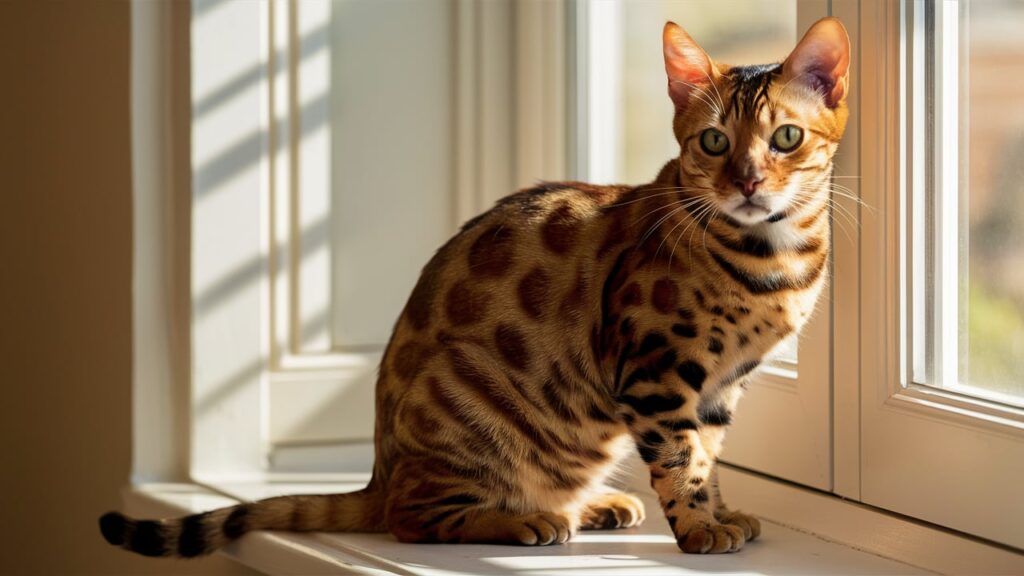
The Bengal Cat’s Coat
The coat of a Bengal cat is not only beautiful but also unique in texture. It feels smooth and smooth, and it frequently has a bright sheen. This luxurious coat is one of the reasons why Bengal cats are so popular, but it also raises questions about their shedding habits.
Do Bengal Cats Shed?
Understanding Cat Shedding
Shedding is a natural process for all cats, where they lose old or damaged fur to make way for new growth. This process is influenced by various factors, including the cat’s health, environment, and breed.
The Bengal Cat’s Shedding Pattern
Yes, Bengal cats do shed, but the amount they shed is generally less compared to many other cat breeds. The short, dense coat of a Bengal cat means they don’t shed as much as long-haired breeds, but they do still lose fur, particularly during seasonal changes.
How Much Do Bengal Cats Shed?
Comparing Shedding with Other Breeds
When compared to other breeds, such as Maine Coons or Persians, Bengal cats are considered low to moderate shedders. Their short coat is less prone to matting and tangling, which can reduce the amount of loose fur around your home.
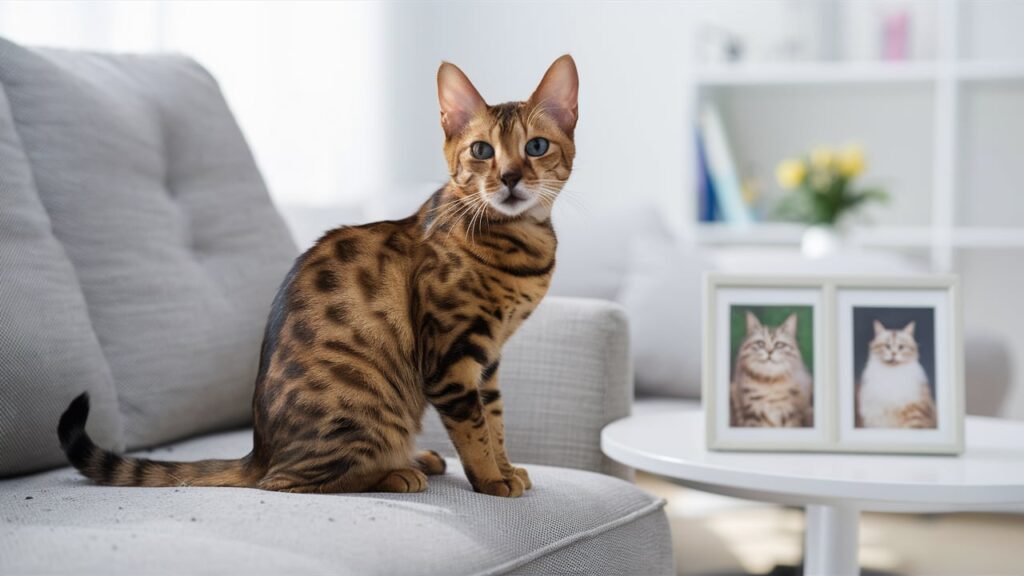
Factors Influencing Shedding
Several factors can influence how much a Bengal cat sheds. These include their diet, overall health, and even the climate in which they live. For example, cats living in warmer climates may shed more frequently.
Why Do Cats Shed?
The Science Behind Shedding
Shedding is a natural process that helps cats maintain a healthy and functional coat. Cats, like many animals, continuously renew their fur as part of their overall health and well-being. Each hair on a cat’s body has a growth cycle, which includes periods of growth, rest, and shedding. When the hair reaches the end of its growth phase, it falls out to make room for new hair. This cycle ensures that the cat’s coat remains in optimal condition, providing protection against the elements and helping regulate body temperature.
Seasonal Shedding
Like most cats, Bengals experience an increase in shedding during certain seasons, typically in the spring and fall. They lose their summer coat in expectation of cooler temperatures, or their winter coat in preparation for warmer weather. Seasonal shedding is entirely normal and should be expected as part of your Bengal cat’s natural cycle.
Managing Shedding in Bengal Cats
Regular Grooming Tips
One of the best ways to manage shedding in Bengal cats is through regular grooming. Regular brushing of your Bengal cat can help in removing loose fur before it gets on your clothing or furnishings. Regular grooming also keeps their coat healthy and reduces the likelihood of hairballs.
Best Tools for Grooming
For Bengals, a slicker brush or a rubber grooming mitt works well to capture loose fur. These tools are gentle on their sensitive skin and can help maintain their coat’s natural shine. Regular grooming not only reduces shedding but also provides an opportunity to bond with your cat.
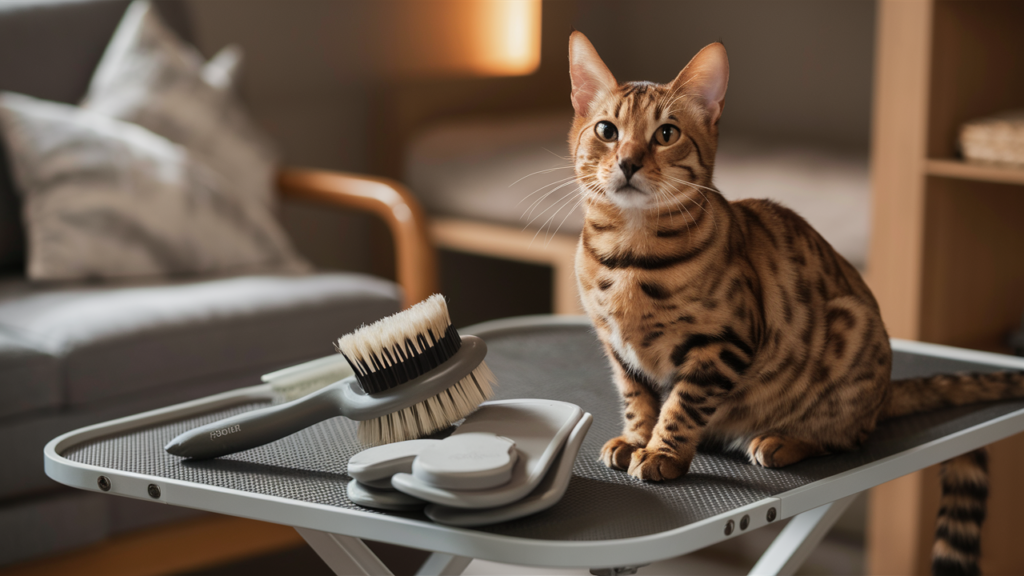
Bathing and Its Effects on Shedding
Bengal cats are known to be more tolerant of water than other breeds, and occasional baths can help reduce shedding. Bathing removes loose fur and dirt from the coat, but it’s essential not to overdo it. Bathing too frequently can strip natural oils from the coat, leading to dry skin and increased shedding.
Diet and Shedding
The Role of Nutrition in Coat Health
A Bengal cat’s diet plays a significant role in the health of its coat. High-quality, protein-rich foods contribute to a shiny, strong coat and can help minimize shedding. Ensure your Bengal is eating a balanced diet, rich in omega-3 and omega-6 fatty acids, which promote healthy skin and fur.
Foods That Reduce Shedding
Incorporating certain foods into your Bengal cat’s diet can help reduce shedding. Foods rich in fatty acids, like fish or fish oil supplements, can make a noticeable difference. Additionally, foods with high levels of vitamins E and A support healthy skin, which in turn reduces shedding.
Are Bengal Cats Hypoallergenic?
Understanding Cat Allergies
Many people are curious if Bengal cats are hypoallergenic. Although there isn’t a cat breed that is completely hypoallergenic, some breeds generate fewer allergies than others. Rather than in the fur itself, cats’ allergens are usually discovered in their dander, saliva, and urine.
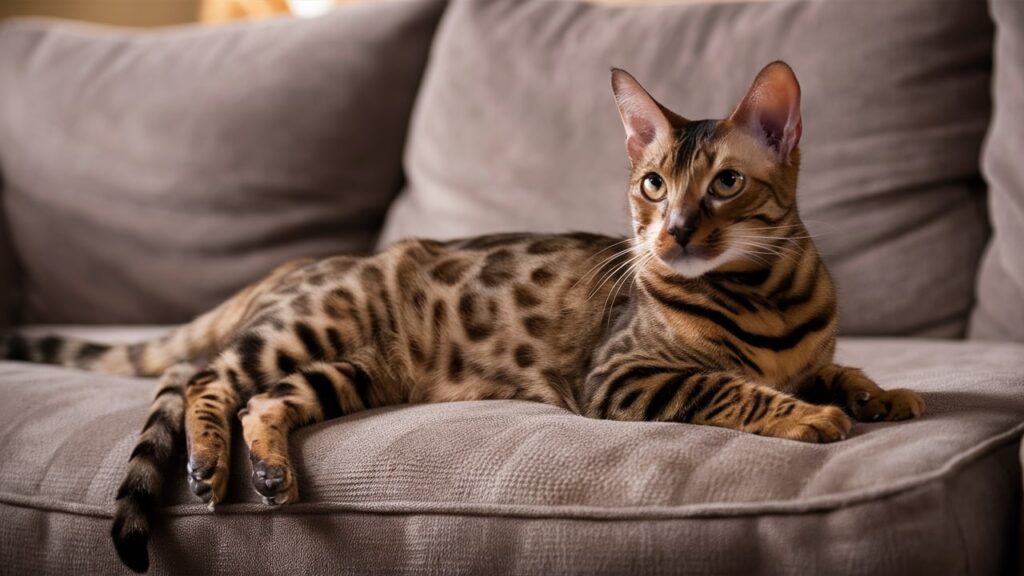
Bengal Cats and Allergies
Bengal cats are frequently seen to be a better choice for those with moderate allergies. They produce less dander than other breeds, and their short, fine coat sheds less, reducing the spread of allergens. However, they are not completely hypoallergenic, and those with severe allergies should still exercise caution.
Dealing with Cat Allergies
Tips for Reducing Allergens
If you have mild allergies but still want to enjoy the company of a Bengal cat, there are steps you can take to reduce allergens in your home. Regular grooming, as mentioned earlier, helps to control shedding and dander. Additionally, using an air purifier and frequently washing your hands after handling your cat can reduce allergen exposure.
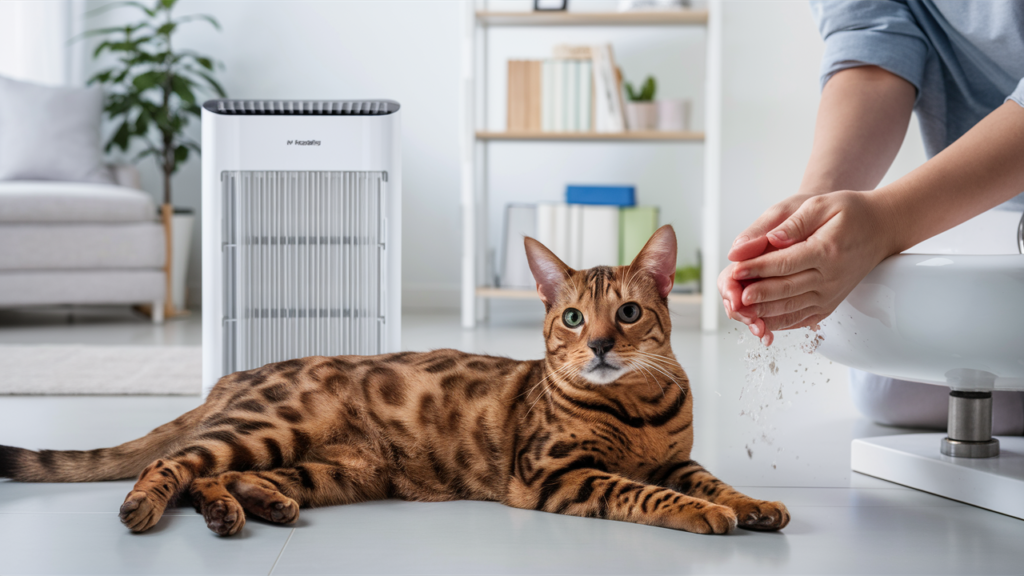
How to Live with a Bengal Cat if You Have Allergies
Living with a Bengal cat despite allergies requires some adjustments. Regular cleaning of your home, including vacuuming carpets and upholstery, can help keep allergens at bay. Additionally, you can create an allergen-free haven in your house by designating some places, like your bedroom, as cat-free zones.
Keeping Your Home Fur-Free
Cleaning Tips for a Fur-Free Home
Even though Bengal cats shed less than other breeds, you’ll still need to manage the fur they do lose. Regular vacuuming and dusting can help keep your home fur-free. Purchasing a vacuum cleaner intended for pet hair helps simplify this job. Also, using lint rollers on furniture and clothing is an effective way to pick up stray hair.
Best Products for Removing Cat Hair
Several products on the market can help you manage cat hair. Lint rollers and pet hair removal brushes are great for quick cleanups. For a more thorough cleaning, consider using a pet-specific vacuum or even a robotic vacuum that can automatically clean up fur from floors and carpets.
Health Issues Related to Excessive Shedding
Common Health Concerns
While Bengal cats generally have healthy coats, excessive shedding can sometimes indicate underlying health issues. Conditions such as skin infections, allergies, or even stress can cause your cat to shed more than usual. Seeking advice from your veterinarian is crucial if you observe a sudden spike in shedding.
When to See a Vet
If your Bengal cat is shedding excessively, or if you notice bald spots or irritated skin, it’s crucial to see a vet. These symptoms could indicate a more serious condition, such as a skin infection, parasites, or a nutritional deficiency. Early intervention can help prevent more significant health issues down the line.
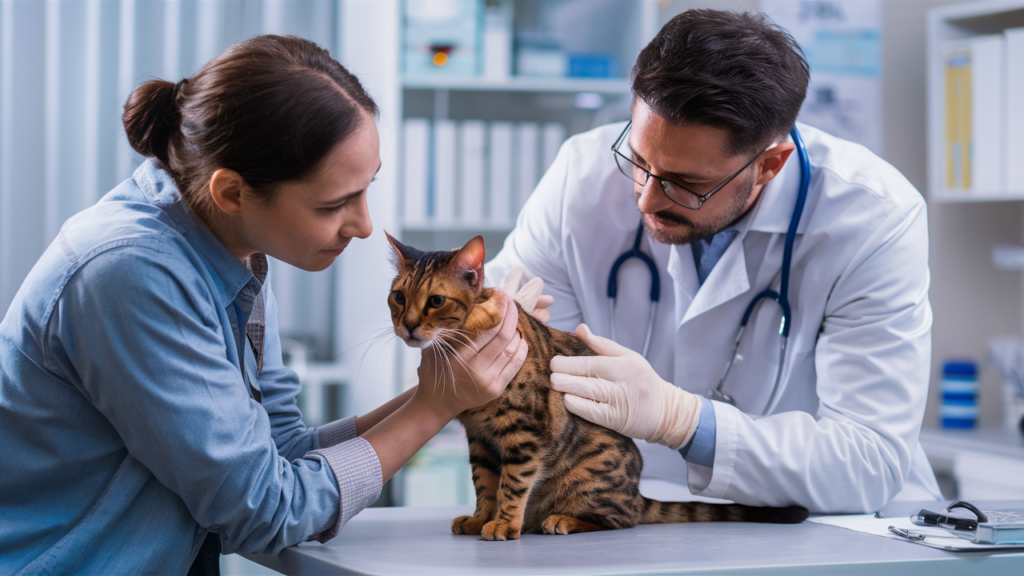
Bengal Cats vs. Other Breeds
Shedding Comparison with Popular Breeds
When compared to other popular cat breeds like the Maine Coon, Persian, or Ragdoll, Bengal cats are on the lower end of the shedding spectrum. While they do shed, their short, fine coat means they produce less loose fur overall. This makes them a good option for those looking for a cat with lower maintenance in terms of grooming and cleaning.
Why Bengal Cats Might Be the Right Choice
If you’re looking for a cat with a stunning appearance, active personality, and manageable shedding, the Bengal cat might be the perfect fit. Their unique fur and loving disposition make them a well-liked option for feline lovers. Plus, their lower shedding levels are an added bonus for those concerned about allergies or keeping a tidy home.
Living with a Bengal Cat
What to Expect
Living with a Bengal cat is an exciting experience. These cats are highly energetic, intelligent, and affectionate. They enjoy interactive play and require mental stimulation to stay happy. Owning a Bengal cat means you’ll need to invest time in play and exercise, but you’ll be rewarded with a loyal and loving companion.
Pros and Cons of Owning a Bengal Cat
Pros:
- Exotic appearance and beautiful coat
- Active and playful personality
- Generally low to moderate shedding
Cons:
- High energy levels require lots of playtime
- Not entirely hypoallergenic
- Can be demanding in terms of attention and care
Conclusion
Bengal cats are a unique and beautiful breed, offering the perfect blend of wild looks and domestic affection. While they do shed, the amount is relatively minimal compared to many other breeds, making them a manageable choice for those concerned about fur in the home. Regular grooming, a healthy diet, and a clean living environment can help keep shedding under control. If you’re looking for a cat that stands out in both appearance and personality, the Bengal cat might just be the perfect addition to your family.
FAQs
How often should I groom my Bengal cat?
Groom your Bengal cat at least once or twice a week to help manage shedding and keep their coat healthy.
Can I reduce shedding with supplements?
Yes, supplements like omega-3 and omega-6 fatty acids can promote healthier skin and reduce shedding in Bengal cats.
Do Bengal cats shed more as they age?
Shedding patterns can change as cats age, but it’s not necessarily true that they shed more. If you notice increased shedding, consult your vet.
What is the best type of brush for a Bengal cat?
A slicker brush or a rubber grooming mitt works best for Bengal cats, helping to remove loose fur and keep their coat shiny.
Are there any non-shedding cat breeds?
While no cat breed is completely non-shedding, some breeds like the Sphynx or Devon Rex shed very little compared to others.
